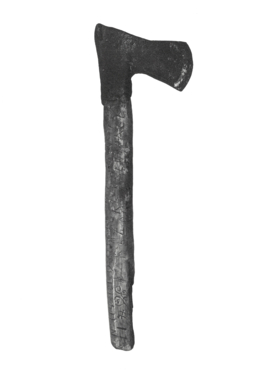Elina Birkehag: D for Daughter
Deep in the woods in Dalarna, Sweden, scattered among stumps and newer growth trees, stand Scotch pine trees, hundreds of years old—thick, gnarled, and covered with carvings. The messages inscribed into their trunks were made by female shepherds who, between the seventeenth and the early twentieth century, left their villages to live and work together on the fäbod (summer farm), and lead their families’ cattle to graze. While out in the pastures, these young women carved the dates, their initials, and notes to each other. The trunks became inscribed with a kind of frenetic teenage scrawl, a coded language, an assertion of their existence: HERE WE DRAW OUR NAMES.
The artist Elina Birkehag grew up in a village not far from these woods. She has searched and documented the carved messages on the trees—a “living” archive that will also die, decompose, and eventually disappear. This book collects findings, written notes, drawings, and photographs, which connect us with the female shepherds and allow us to read the trees.
With contributions by Quinn Latimer, Meg Miller, Matilda Kenttä & Linnea Rutz, Jungmyung Lee, Jennie Tiderman-Österberg, and Amelia Groom & M. Ty, the following pages form a dialogue with this barely-studied writing system and relate it to contemporary themes of knowledge sharing, gossip, ecology, labor, and art.

